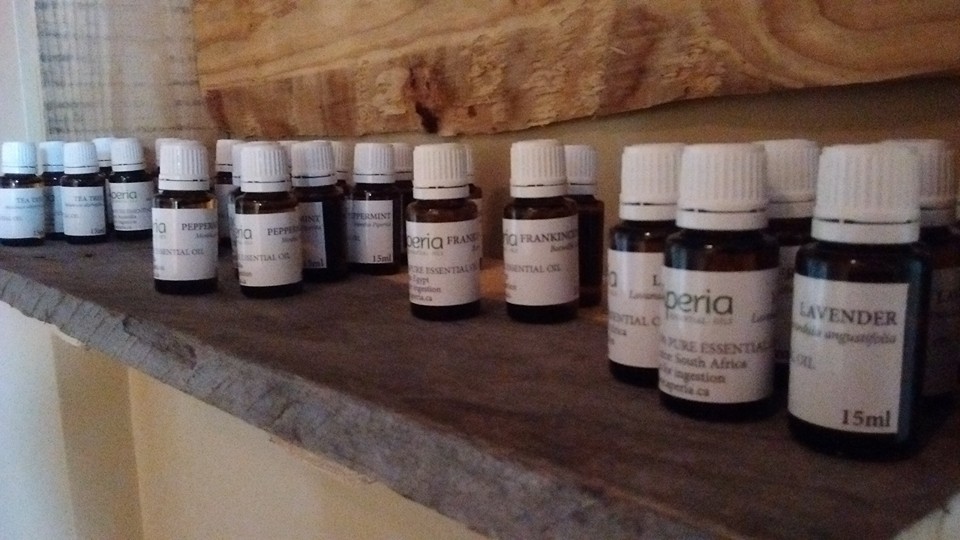Essential oils are highly concentrated liquids extracted from various plants. If you buy from a trustworthy source, they are pure and free from pesticides and other chemicals. They are grown, harvested, and processed in ethical ways. And they work by reintroducing and replenishing plant metabolites that our bodies are severely lacking in this day and age.
Each individual oil has a variety of therapeutic properties. A single oil can be anti-fungal, anti-inflammatory, antiviral, bactericidal, and analgesic. There are dozens of therapeutic properties, and hundreds of essential oils, so the possibilities really are endless.
Using essential oils can be as simple as taking a deep inhalation right from the open bottle. When you breathe in the aroma, you get the oil molecules into your lungs (and from there, into your bloodstream to be carried throughout the body) and into your brain (and from there, into your nervous system to be carried throughout the body). With just a couple of deep breaths, you get a double-shot of all those therapeutic properties.
To take it a step further, you can use a diffuser. This is a small appliance that uses a fan or a fine mist to circulate the oil molecules in the air. This way of breathing the oils in is ideal for providing benefits to multiple people, or for having a consistent flow over a longer period of time (throughout the day or overnight).
Another easy way to use essential oils is to apply them topically. The skin is the largest organ of the body, and oils absorb easily into it, allowing for quick access to the bloodstream. Oils can be applied on specific areas if you’re treating localized pain or infection (on the abdomen for menstrual cramps or directly on an infected cut, for example). Or they can be dabbed on the base of the skull or along the spine to, again, get those molecules into the nervous system. The easiest go-to spot for applying oils is the bottoms of the feet. Even if you’re treating a headache, the oils are quickly absorbed and travel through the body to where they need to go. Another benefit of applying the oils on the feet is that it greatly reduces the aroma that you may not necessarily want wafting around your face all day!
When using essential oils topically, it is recommended to dilute them – which is beneficial in more than one way. First, it makes your product go further, thereby reducing cost. And it also makes them more effective (spreading the oil molecules out makes them work harder). A basic rule of thumb for an adult-strength dilution is to use one drop of essential oil for every millilitre of carrier oil. Therefore, if you have a tablespoon of carrier oil (coconut, jojoba, grapeseed, olive…), that’s 15 ml, so you would add 15 drops of essential oil(s). Blending more than one essential oil together makes them even more effective, so you could do five drops each of three different oils.
Internal use is not recommended by Health Canada or the Canadian Federation of Aromatherapists, despite what many of the international essential oil brands say. Some oils can build up in your filtering organs and do long-term damage. Some oils are too strong for your delicate internal membranes. And ingestion isn’t even as effective as aromatic or topical use!
A few great oils to start with are lavender, peppermint, lemon, and tea tree. Those four cover a broad spectrum of therapeutic uses and they are easy to experiment with. They are also readily and inexpensively available in many health food stores and some pharmacies. So go pick some up and give them a try. It’s not hard to start incorporating this alternative healthcare practice into your normal lifestyle.
Anita Neuman, CAHP, is a Certified Aromatherapy Health Professional with her own line of essential oils. She is the newest member of the Vivo! health team at Vivo! Naturopathic & Wellness Centre in downtown Galt, Cambridge ON.
For more information about Anita, her products, or how to use essential oils, visit www.aperia.ca or vivoinhealth.com (519-267-8486).


 RSS Feed
RSS Feed